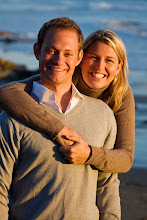Training Wheels originally came with a 6 hp 2 stroke regular shaft outboard that usually pushed the boat along decently. It was loud and smelly but mostly did a good job. The motor had a regular shaft and somewhere along the life of the boat the transom had been built up about an inch higher (more on this later). This meant that the prop didn't always stay in the water. The first few times I took the boat out, I couldn't figure out why every so often the engine would start to sputter or just thrash water around behind the boat. Then I realized that when anyone went to the bow of the boat or in waves the prop would pull out of the water. This wouldn't do, and so my research for a new motor began.
I wanted to be safe and have as much power as I could to cope with any condition that was thrown at me so I wanted to go big. This was obviously a previous owner's idea as well, as noted by the drag racer scoop that was attached to the hatch of the engine bay lazerette. I assume this was done to allow enough head room to fit a large 75 hp motor. The first thing I found out is that this was comically useless.
1. After a sailboat reaches hull speed, any extra horsepower isn't really going to do you much good and will only serve to waste fuel. Hull speed is hull speed (maximum of 1.34 times the square root of the waterline length) regardless of whether or not the water is moving itself. Hull speed for my C25 is then 6 knots. What does this mean? I need an engine that can get my boat to 6 knots which is pretty slow. This is a point for a smaller engine. Large HP engines perform really poorly at slow speed like this.
2. What am I going to do with motor? With me, it will be mostly docking and making it out of the harbor to actually sail. This means backing up is every bit as important as moving forward, and slow speed control is key, so a shallow pitch prop (6 inches or less) is used, and a 20" or longer shaft is mandatory to keep the prop in the water if the boat porpoises through waves or when crew move around the boat. In our Coronado steering is done by the boat's rudder, and the outboard is locked in dead-ahead. No room in the lazarette well to turn it. Point two for a smaller motor.
3. Size of your boat. Some advice given was to go as big as you can, as I thought in the begining. The usual example given by powerboaters is stopping power. You're not really able to "stop" a sailboat with your engine, like you do with a powerboat by throwing it into reverse. Especially not an 4500 lbs boat. Because once it gets momentum, it doesn't just stop but only help to slow it down. I've seen sailors with big boats coming up to the dock too fast, then trying to slow down with reverse. And it just doesn't work. When that happens, somebody usually has to jump onto the dock at the last minute and stop the boat with a line on a cleat or pole. Dealers have told me that the 4-strokes have much better low end power (good) than the old 2-strokes and I need one hp per 500 pounds of sailboat. So for my C25 it looks like an 9hp 4 stroke.
4. More hp means more size and weight. I still wanted a bigger engine if I could, and I did investigate 15hp engines. The 9.9hp engines are smaller usually by about 30 pounds (almost 30%), lighter than the 15hp and the price difference is about 10%. The weight is a bigger factor on a saiboat, but for only 10% more, hmm. After reviewing the specs of various 15hps, it would appear that the 15 is not an option. Too big fore-and-aft to fit through the lazarette hatch. So I am now down to picking a 6hp or 9.9hp.
5. Extra features that matter. One thing that is always a concern on a boat is power. 9.9hp outboards are the smallest engines that include electric start and charging of the batteries while in use. This sealed the deal. Now to start the craigslist search.
Winner is a Yamaha 9.9hp 4 stroke long shaft. I found it on craigslist in town for $200. Talked him down easily enough to $150 since it didn't run at the moment. The cylinders had good compression (thumb over the spark plug holes while attempting to start.) but no spark. A trip to the marine mechanic and the engine was up and going for only another $50.
Wednesday, March 24, 2010
Subscribe to:
Post Comments (Atom)








Hi Lauren & Truman,
ReplyDeleteWe don't know each other but we have a lot in common.
My husband, Matt, and I are in full preparations for throwing off the bowlines in pursuit of our own dream of cruising about the world within the next year.
It's encouraging to see other young aspiring cruisers out there learning to sail and preparing to live this dream. We admire your drive, creativity, tenacity, and resourcefulness along this journey and are learning from your experiences. Thank you for sharing them here!
Would you mind if we listed your site as "other cruisers we follow" on our site?
Fair winds,
Christie and Matt Butcher of s/v Kaleo